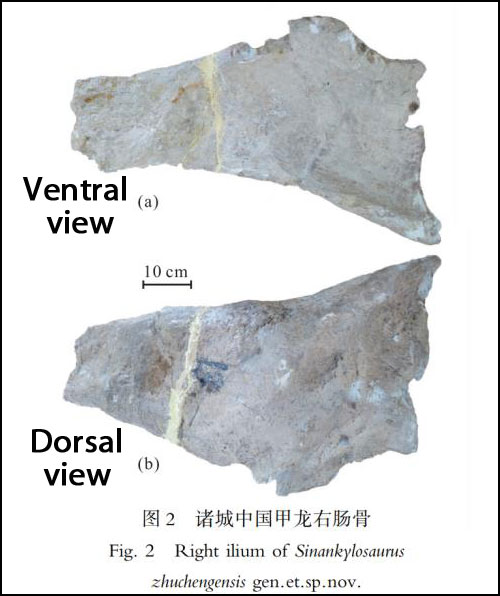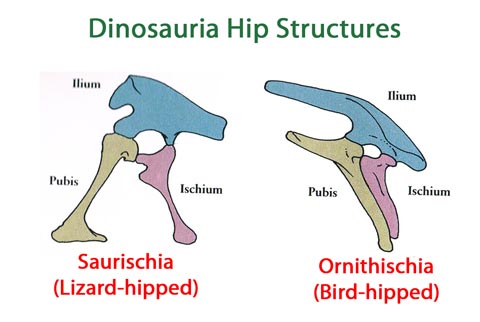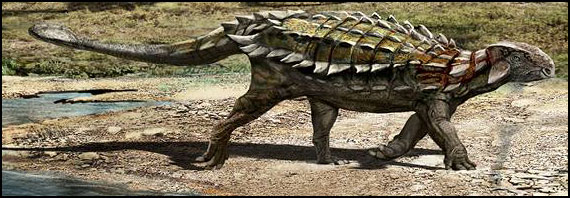Sinankylosaurus zhuchengensis – Late Cretaceous Chinese Ankylosaur
Chinese scientists have described a new species of armoured dinosaur based on a single fossilised bone found at a dig site in the city of Zhucheng in Shandong Province (eastern China). The fossil, a right ilium, has been identified as typical of the Ankylosauria clade and represents the first evidence found to date of ankylosaurs being present in the Late Cretaceous of that part of eastern China. The dinosaur has been appropriately named Sinankylosaurus zhuchengensis which translates as “Chinese Ankylosaurus from Zhucheng”.
Sinankylosaurus zhuchengensis
The Holotype Fossilised Right Ilium (Sinankylosaurus zhuchengensis)

Picture credit: China Geological Bulletin
A Significant Hip Bone
The ilium is a broad, plate-like bone located at the top of the hip girdle. Its shape and size varies considerably depending on the dinosaur genus. These bones and the placement of the hips can be very helpful to palaeontologists when it comes to identifying different members of the Dinosauria. For example, most theropods have narrow hips so the distance between the left and right ilia (plural for ilium), is relatively short. However, there are exceptions, the mainly herbivorous theropods the therizinosaurids have much wider hips.
Numerous sauropods and all thyreophorans (armoured dinosaurs), have very wide hips in relation to their body proportions. In armoured dinosaurs the distance between the left and right ilia is substantial and in Cretaceous ankylosaurs this bone is very distinctive as it exhibits lateral flaring, providing anchor points for large muscles.
The configuration of the ilium in association with the other hip bones, the ischium and pubis, led to the establishment of two main dinosaur Orders – Saurischia and Ornithischia as proposed by the British palaeontologist Harry Govier Seeley in 1887. These three bones form the “hip socket” into which the head of the femur (thigh bone) is located.
Classifying Dinosaurs Based on Hip Structure

Picture credit: Everything Dinosaur
From the Xingezhuang Formation
The ilium was found about a decade ago. It comes from the Xingezhuang Formation of the Upper Cretaceous Wangshi Group. The strata have proved difficult to date but most palaeontologists suggest that this formation is between 77 to 73 million years old (middle to late Campanian faunal stage). With so very little fossil material to go on, the scientists have used the roughly contemporaneous ankylosaurid Pinacosaurus (P. grangeri) which heralds from the Djadokhta Formation of Mongolia, as a reference and to permit a life reconstruction of an ankylosaurid to be used in media releases.
A Life Reconstruction of Pinacosaurus – Sinankylosaurus May Have Been Similar
Picture credit: Zhao Chuang (PNSO)
To view PNSO prehistoric animal models and figures: PNSO Age of Dinosaurs Models.
Sinankylosaurus is estimated to have measured around 5 metres in length and it may have weighed around 2 tonnes.
East Meets West
The discovery of a new dinosaur species adds to the diversity of dinosaurs associated with the Upper Cretaceous deposits of the Wangshi Group and also demonstrates the similarity between the dinosaurian faunas of eastern Asia and western North America in the Late Cretaceous.
For example, dinosaur fossils from the Xingezhuang Formation include hadrosaurs such as Shantungosaurus, ceratopsids such as Sinoceratops, tyrannosaurs and now an ankylosaurid. This biota is similar to the dinosaur fauna associated with Campanian-aged deposits found in southern Canada and the USA.
The Everything Dinosaur website: Visit Everything Dinosaur.







Leave A Comment